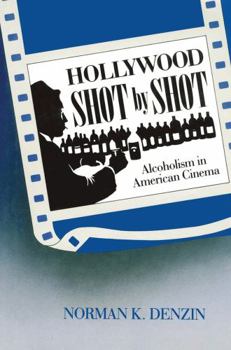Hollywood Shot by Shot: Alcoholism in American Cinema
Select Format
Select Condition 
Book Overview
To what extent have Hollywood feature films shaped the meanings that Americans attach to alcoholics, their families, and the alcoholic condition? To what extent has the mass culture of the movie... This description may be from another edition of this product.
Format:Paperback
Language:English
ISBN:0202303454
ISBN13:9780202303451
Release Date:December 1991
Publisher:Routledge
Length:310 Pages
Weight:1.10 lbs.
Dimensions:0.7" x 6.0" x 8.9"
Customer Reviews
1 rating
The best book in this field to date
Published by Thriftbooks.com User , 26 years ago
This is a comprehensive study of what the author asserts is an unacknowledged genre - the alcoholism movie. Norman K. Denzin is best known for his writings in addiction studies, including `The Alcoholic Self' [1987], and `The Alcoholic Society: The Alcoholic Self and Its Recovery' [1993]. Where this book differs from his other work is in its synthesis of methodologies -from cultural studies, historical sociology, psychoanalytic film theory - in addition to social psychology. It places the notion of `subjectivity' centre stage in arguing that cinematic representations offer multiple possibilities of identification and dis-identification to the viewer. This is a model that allows interactivity:- it is both reflective and generative of everyday social being and social consciousness. In this way, Denzin puts Raymond Williams' `structures of feeling' to good use.The Hollywood alcoholism films analyzed span the period 1932-1990. Its start is not arbitrarily chosen as it marks both the death throes of Prohibition and the ascendance of Hays Code production constraints on Hollywood depictions. This typifies, as Denzin sees it, deep-rooted ambivalence and contradictions in American attitudes to alcohol. From the repeal of Prohibition through to the 1960s, the `Lost Generation' of alcoholic writers-turned-Hollywood-screenwriters influenced cinema representations. The leitmotif of hard drinking in their literary works has been written about extensively(see `The White Logic: Alcoholism and Gender in American Modernist Fiction' John W Crowley 1994), yet contemporaneous film fictions are less well addressed. Denzin's `Shot by Shot' redresses the balance by meticulous scrutiny of movies as film texts per se. Through solid scholarship and thorough research, he maps the trajectory of the genre from anti-alcohol through AA influenced illness concept to contemporary dysfunctional family theory.The section on the `double standards' in representations of female screen alcoholics is astutely handled, as is the Lacanian based section `The Cracked Mirror and the Alcoholic Self'. The most compelling argument Denzin has however lies in the insistence on the legitimacy of an `alcoholism genre' in cinema. The common strategy of attributing cinema texts to genres other than alcoholism ( e.g. `Harvey' and `Arthur' as light comedy, `Lady Sings the Blues' as biopic) operates as a form of denial, and parallels the lived experience of alcoholics and their families. Indeed Denzin cites the use of Hollywood alcoholism films in re-hab treatment centres - used to facilitate the individual's rupture of denial, and their own self-attribution as alcoholic. If anything, Denzin could have developed this a little further through differentiation in both lived experiences and representations of ruptured denial - the slow dawning of identification as well as the epiphanic moment of realization.Denzin's examples are well chosen and justified





